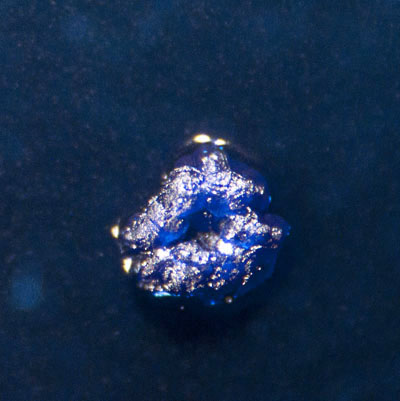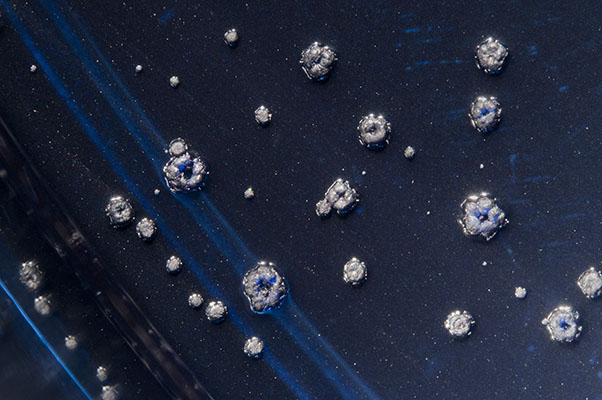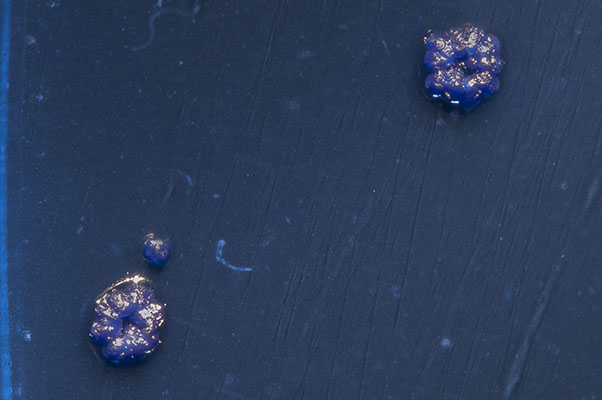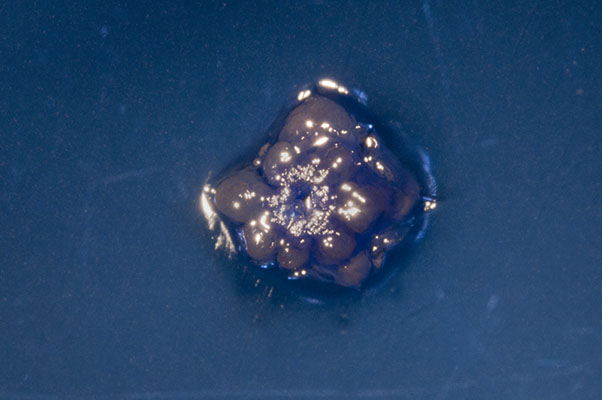
 |
Kingdom: Bacteria Phylum: Firmicutes Class: Bacilli Order: Lactobacillales Family: Streptococcaceae Genus: Streptococcus Species: mutans |
Streptococcus mutans is a facultative anaerobe and "gentian violet" in color. It has a thick cell wall, which is, composed of the peptidoglycan murein and teichoic acids, which aid in the prevention of osmotic lysis of the cell and maintenance of its rigidity and shape, which almost resembles like a bundt cake. It synthesizes and encase itself in a capsule that is composed of the polysaccharide dextran, and its structural subunit is dextran glucose.
S. mutans is commonly found in the human oral cavity and can act as a significant contributor to tooth decay, i.e. dental caries or cavities. It is able to colonize on the surface of the tooth enamel by "anchoring" and forms biofilms comprised of three hundred to five hundred cells, also known as (the matrix for) dental plaque. This species uses sucrose and metabolizes it into lactic acid, which makes the enamel vulnerable to tooth decay. In addition, they utilize the sucrose, which then helps the colonies adhere to the enamel as a result from the production of an extracellular, dextran-based polysaccharide. Sucrose is used as a substrate, while dextransucrase is used as the enzyme in the formation of this dextran “product.” S. mutans is able to digest and metabolize glucose, fructose, and other carbohydrates, and use it in the same manner as sucrose. On a much different note, S. mutans has been shown to be "beneficial" against the cariogenic process, where it produced antibodies that inhibited the process.
 |
 |
 |
| Figure 4. An overview of Streptococcus mutans. | Figure 5. Streptococcus mutans colonies. | Figure 6. A closer view of an individual Streptococcus mutans colony. |
Click to go back to:
© 2010 Dina Y. Yang. All rights reserved. No photograph or the website, in whole and/or any part, may be reproduced by any means whatsoever without written permission from the photographer herself.